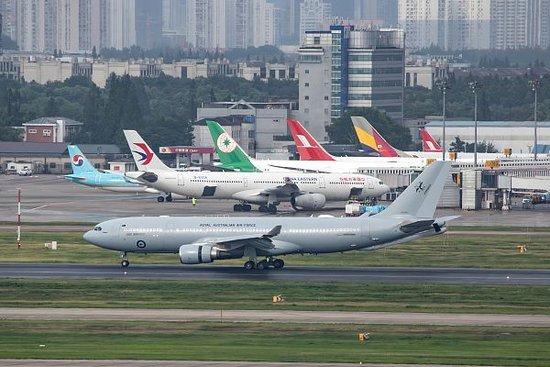
[Observer Network, by Liu Bai] During his second visit to China as Prime Minister of Australia, Albanese’s potential cooperation with China has caught the attention of Australian media.
On July 11th, the Australian Broadcasting Corporation (ABC) noted that the Australian government has expressed its intention to further cooperate in green energy with China. The report stated that for Australia, climate change is one of the most pressing issues for the government, especially given its efforts to fulfill its national emission reduction commitments.
Academics have pointed out that China is an “indispensable partner” in the field of energy transition for Australia. In just two days, China managed to achieve the same level of renewable energy installations as Australia over the past year.
“China Leads Globally with Exceptional Advantage”
During his six-day visit to China, Albanese’s itinerary included Beijing, Shanghai, and Chengdu. ABC reported that this visit coincided with a critical moment: facing the unpredictable “America First” agenda of US President Trump, Australia’s response has become increasingly uncertain; meanwhile, China, being an indispensable economic partner, does not mean Australia can easily draw a clear line between itself and China.
Earlier at the ASEAN meeting, Australian Foreign Minister Huang Yingxian stated that China’s size and influence make it central to addressing global challenges, including climate change, global public health, international trade, and energy transition.
For Australia, climate change is one of the most pressing issues for the government, especially given its efforts to fulfill its national emission reduction commitments.
The report mentioned that China is the world’s largest carbon emitter but also invests substantial funds in developing renewable energy, now accelerating the decarbonization process of industrial production.
On August 15, 2024, in Qinghai Haixi Prefecture, a drone captured the dazzling light from the Denghe Salt Tower Solar Thermal Power Station under the sunlight.
The Australian government has revealed that during Albanese’s visit to China, the two countries might disclose some cooperation in the field of climate change. Albanese stated that there is “expected further cooperation” in green energy.
Caroline Wang, an expert at the think tank “Clean Energy Finance,” said that in many areas of energy transition, China leads the world with an “astonishing advantage.”
“Globally, 70% of electric vehicles and 80% of solar panels are produced in China,” she said in an interview with ABC. “Looking at data from May this year, the amount of renewable energy installed in China in just two days was equivalent to Australia’s entire 2024 target.”
She pointed out that this means if Australia wants to achieve its emission reduction goals and establish green industrial capabilities through the “Future Made in Australia” plan, China will be an indispensable partner.
“We need Chinese technology and support from the Chinese industrial manufacturing sector to achieve this,” Wang said. “This is a kind of practical cooperation that other countries are already undertaking, which Australia can learn from.”
Data released by the National Energy Administration shows that in the first five months of this year, China added 196 million kilowatts of new photovoltaic installations, a year-on-year increase of 57%. Currently, the scale of photovoltaic power generation has historically broken through 1 billion kilowatts, reaching 1.08 billion kilowatts, equivalent to about 48 times the total installed capacity of the Three Gorges Dam.
With a photovoltaic installation capacity exceeding 1 billion kilowatts, it can generate 1.2 trillion kilowatt-hours of green, clean electricity annually, accounting for 12% of China’s annual total electricity generation. This can replace 152 million tons of standard coal, meeting the annual electricity needs of nearly 500 million households.
According to the “Australian Financial Review,” a delegation visiting China included executives from Macquarie Bank and HSBC Australia, as well as mining giants such as BHP Billiton, Rio Tinto, and Ford斯克.
The “Guardian” reported that in the past year, the bilateral trade between Australia and China approached AUD 312 billion. Australia has consistently emphasized that China is its largest trading partner. Under the leadership of Albanese, exports of barley, rock lobster, and beef to China have begun to rebound.
“Australia-China Relations Should Not Be Determined by Differences”
BBC News on July 12 also highlighted that Albanese’s visit to China represents an important diplomatic event since the gradual warming of Australia-China relations in 2023. Despite geopolitical differences between the two countries, Albanese’s focus will still be on trade and economic cooperation, particularly emphasizing the importance of maintaining stable relations with China for Australia’s employment and economy.
Analysts believe that this visit demonstrates a stabilization in Australia-China relations. Although the United States might feel uneasy about Australia’s closeness to China, there is widespread domestic support for Albanese’s approach, viewing it as beneficial to national interests.
James Laurenceson, Director of the Australian Institute of Relationships, stated, “Both sides recognize their differences and agree that bilateral relations should not be determined by these disagreements.”
He mentioned that neither side seeks to form alliances in geopolitics.
“They need to maintain political stability and constructive engagement to deepen contacts in other areas such as business, cultural organizations, and universities.”
On July 12, Australian Prime Minister Albanese’s plane landed at Shanghai Hongqiao International Airport.
Laurenceson also noted that although Albanese’s trip might not be welcomed in Washington, it has received broad domestic support.
他说:“华盛顿正朝着一个明显违背澳大利亚利益的方向前进,任何被视为向白宫卑躬屈膝的(领导人)都将在国内面临阻力。”
观察人士告诉BBC,围绕“奥库斯”(AUKUS)等问题的分歧,不会对澳中关系造成重大破坏。
“这是澳大利亚当前政府更为低调、成熟外交策略的一部分,避免重蹈前几年的互相指责的覆辙。”澳大利亚国际事务研究所负责人布莱斯·韦克菲尔德(Bryce Wakefield)说。
ABC此前披露的一份民调显示,只有约五分之一的澳大利亚人将中国视为“需要应对的威胁”,三分之二的受访者认为澳中关系是一种“需要处理的复杂关系”。
报道称,中国是澳大利亚最大的供应国,两国间的贸易降低了澳大利亚人的生活成本。澳大利亚科廷大学的一项研究显示,与中国的贸易使澳大利亚家庭平均可支配收入增加2600澳元,相当于每人增加4.6%。
越来越多的澳大利亚人认为,中国是比美国更加可靠的贸易伙伴。澳大利亚贸易部长法瑞尔此前也强调,阿尔巴尼斯政府的选择取决于澳大利亚的利益,而不是“美国可能想要或不想要什么”,“我们不想减少与中国的贸易,我们想增加与中国的贸易。”
7月8日,中国外交部发言人毛宁在例行会上表示,阿尔巴尼斯总理此访正值中澳全面战略伙伴关系开启第二个10年,在两国领导人的引领和双方共同努力下,中澳关系不断改善发展。
China is willing to work with Australia on this visit as an opportunity to strengthen communication, enhance mutual trust, expand pragmatic cooperation, and promote the comprehensive strategic partnership between China and Australia.